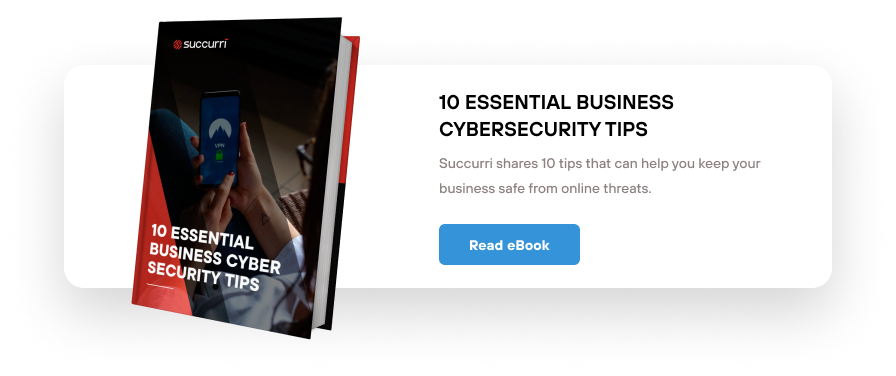In our ever-connected world, where business is increasingly conducted online, cyber security attacks lurk in the shadows, posing a constant challenge for companies worldwide.
From the smallest startups to the largest corporations, no one is immune to the sophisticated tactics of today’s cybercriminals. These digital dangers are not just a fleeting concern; they’re a persistent threat that can cause significant harm to businesses and their customers.
Understanding and combating these threats has never been more crucial as we navigate this digital age. So, let’s arm ourselves with knowledge and shine a light on these hidden adversaries together.

What is a Cyber Attack?
A cyber attack is essentially a digital heist or sabotage executed across the internet’s expanse. It represents hostile actions by individuals or groups to infiltrate or damage an entity’s digital sphere.
Using tools like malware, phishing scams, ransomware, denial-of-service attacks, and man-in-the-middle operations, attackers aim to disrupt, steal, or control. Their motives vary from financial gain to espionage or mere chaos.
These digital predators target individuals, businesses, and governments, exploiting vulnerabilities to advance their goals. Recognizing the scope and nature of these threats is crucial to strengthening our defenses against them.
11 Common Types of Cyber Security Attacks
There are various types of cyber attacks, each with its own tactics and targets. Let’s delve into some of the most common ones:
#1 Malware
Malware, the digital world’s lurking villain, sneaks into systems to steal, destroy, or spy. This umbrella term captures viruses that corrupt files, Trojans disguised as harmless software, worms spreading across networks, ransomware locking, steal sensitive data for ransom, and spyware spying on activities.
Preventing malware starts with robust antivirus malicious software, frequent updates, and a keen eye for suspicious downloads. Install Malware to help protect your system from malicious attacks.
#2 Phishing
Phishing is the digital equivalent of a con artist’s scam, tricking recipients into revealing sensitive information through deceptive emails or messages.
This malicious tactic morphs into spear phishing, which targets specific individuals, whaling, which targets high-profile targets, and pharming, which misdirects users to fake sites. Education is key to combating phishing.
Recognizing phishing attacks, verifying email sources, and using multi-factor authentication can significantly reduce the risk of falling victim to these deceitful maneuvers.
#3 Man-in-the-Middle (MitM) Attacks
Man-in-the-Middle (MitM) attacks are like digital eavesdropping, where attackers intercept and alter communications between two parties without their knowledge. This could happen on unsecured Wi-Fi networks, making sensitive information vulnerable.
Ensuring secure, encrypted connections, avoiding public Wi-Fi for sensitive transactions, and using VPN services can help shield against these intrusive breaches, keeping private communications truly private.
#4 Denial-of-Service (DOS) Attack
A Denial-of-Service (DoS) attack floods servers, systems, or networks with traffic to overload resources and cut user access. It’s akin to crowding the entrance of a shop so no one can enter or exit.
Implementing network security measures, such as firewalls and anti-DDoS attack protocol, and having a robust infrastructure can mitigate these attacks, ensuring services remain accessible to legitimate users.
#5 SQL Injections
An SQL Injection attack exploits vulnerabilities in data-driven applications by inserting malicious code into queries and manipulating databases to gain access to unauthorized information. This can lead to data theft or loss.
To thwart SQL injections, use prepared statements with parameterized queries, regularly update and patch software, and conduct thorough input validations to strengthen database security.
#6 Zero-day Exploit
Zero-day exploits take advantage of unknown vulnerabilities in software or hardware, striking before developers can patch the flaw. These attacks can cause widespread damage.
Defending against them requires a proactive security posture: keeping software updated, using security software that can detect unusual behavior, and following best practices for cybersecurity hygiene to minimize exposure to such insider threats.
#7 Password Attack
Password attacks involve cracking or guessing passwords to gain unauthorized access to systems. This old-school yet effective method leverages weak, default, or stolen passwords.
Strengthening defenses against password attacks means enforcing strong, unique passwords, utilizing password managers, and implementing multi-factor authentication to add layers of security, making unauthorized access exponentially more difficult.
#8 Cross-site Scripting
Cross-site Scripting (XSS) attacks inject malicious scripts into trusted websites, which then execute in the browsers of unsuspecting users. This can steal information, hijack sessions, or deface websites.
Protecting against XSS requires sanitizing and validating user input, implementing Content Security Policy (CSP) headers, and ensuring web applications are securely coded against such vulnerabilities.
#9 Rootkits
Rootkits are stealthy malware designed to gain unauthorized root or administrative access to a computer, often masking its existence or other malicious activity.
Detecting and removing rootkits can be challenging, necessitating specialized tools, maintaining up-to-date security software, and operating system integrity checks to prevent these hidden threats from taking hold.
#10 Internet of Things (IoT) Attacks
IoT Attacks target the ever-growing network of connected devices, from smart thermostats to security cameras. These devices often lack robust security, making them easy targets.
Protecting against IoT attacks involves changing default credentials, regularly updating device firmware, and isolating IoT devices on separate network segments to reduce potential damage and enhance overall network security.
#11 Brute Force Attacks
A Brute force attack uses automated tools to guess passwords or encryption keys through trial and error. These attacks can exploit weak credentials and gain unauthorized access to systems or accounts.
Defending against brute force attacks requires enforcing strong password policies, limiting login attempts, and implementing multi-factor authentication to fortify account security.
Conclusion
As we’ve journeyed through the digital landscape of cyber security threats, from phishing to zero-day exploits, it’s evident that safeguarding against these dangers requires vigilant, sophisticated defense strategies.
At Succurri, we recognize the critical importance of protecting digital assets and maintaining customer trust.
With our advanced cyber security solutions and expert team, we’re committed to defending your operations against the diverse threats of the online world. We’re not just a provider but your partner in building a resilient defense.
Don’t let cyber threats compromise your success. Take action now with Succurri. Reach out today and discover how our tailored solutions can fortify your digital presence. Let’s secure your future together—contact Succurri now.
Want to learn more about what a Managed Security Services Provider is? Listen to Succurri partner, Grant Eckstrom, and Fractional CMO, Tony Lael, discuss the topic in more depth in this video.





